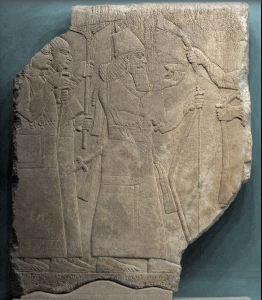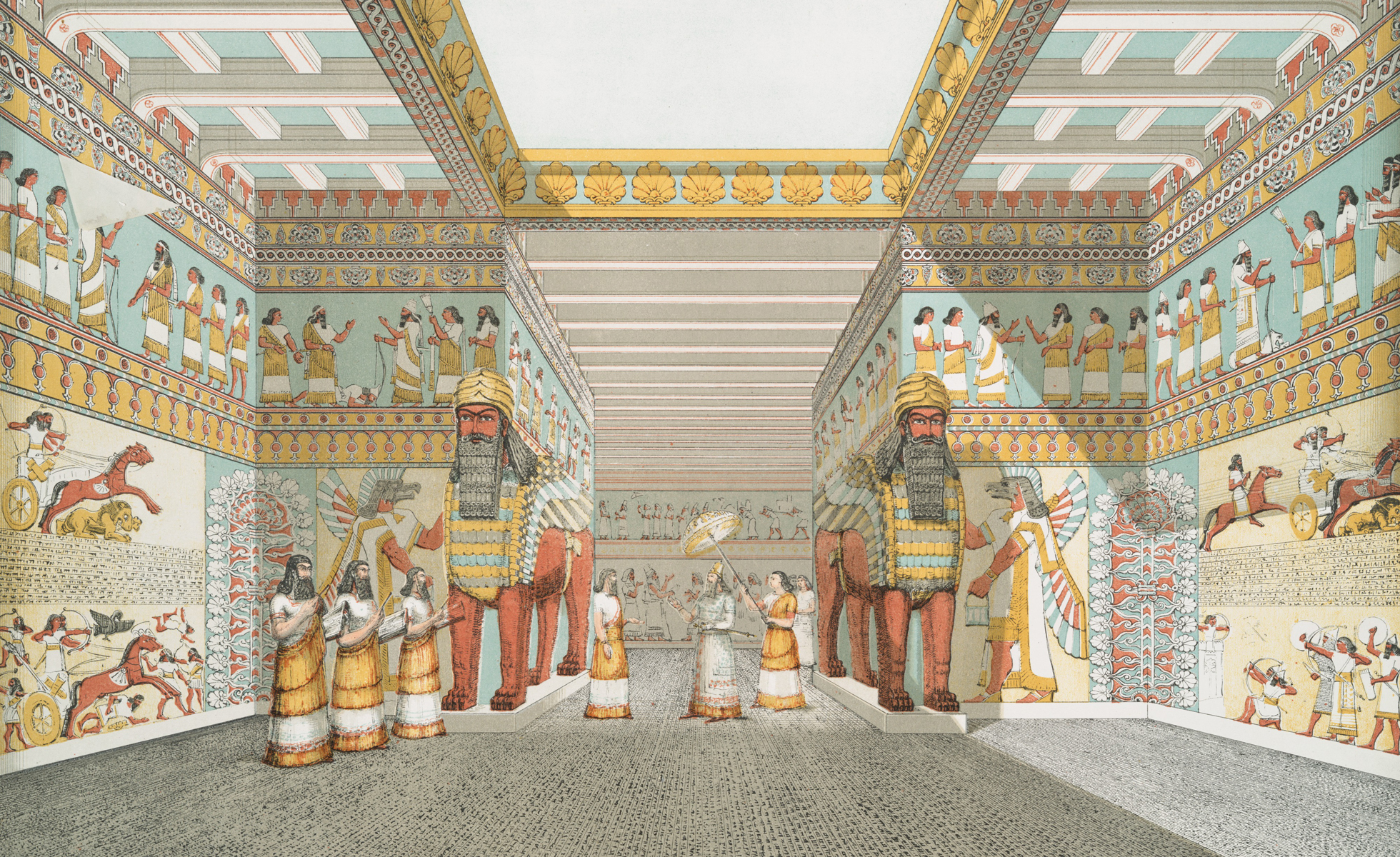When King Ashurnasirpal II built the Northwest Palace as the capital for his empire, he wanted to create a physical structure that would top anything his predecessors made before. Rather than building his palace in the traditional capital Ashur, Ashurnasirpal II decided to build a new capital city from scratch and preside over his kingdom there. Choosing the crumbling city Kalhu as his new home base, Ashurnasirpal II rebuilt the city from the ground up.

“Relief of Ashurnasirpal With Attendants Celebrating a Hunt”
The new capital Kalhu spanned across 890 acres of land with 4.6 miles of surrounding walls. Wanting to stand out against the already beautiful Ashur, Ashurnasirpal II went above and beyond to ensure his new capital trumped the old one. His palace was the city’s crown jewel: 656 feet long and 426 feet wide with state apartments that housed the 16,000 residents Ashurnasirpal II moved to the new city. Lush botanical gardens and a zoo of exotic imported animals surrounded the palace, reminding visitors of the king’s divine power granted to him by Assyrian deity Ashur.
Inside the palace, stone reliefs adorned the walls and corridors to effectively articulate the message of Ashurnasirpal II’s supremacy. Architects flood viewers with images of the king participating in various honorable acts.

Artist interpretation of room inside the Northwest Palace
While the “Relief of Ashurnasirpal With Attendants Celebrating a Hunt” is relatively small compared to the massive, larger-than-life reliefs of the Apkallu divinities, the size of the relief is not what makes it so intimidating in this case. Furthermore, it would have been spiritually disrespectful for Ashurnasirpal II to depict himself as large as or larger than the Apkallu figures, as that would indicate that Ashurnasirpal II sees himself as more significant than the divinities.
Instead of size, the power of the relief comes from its plurality. Upon entering the room with the “Relief of Ashurnasirpal With Attendants Celebrating a Hunt,” visitors would be immediately overwhelmed with a shock of color. The original paint is no longer on this relief, but other remains of color on other reliefs indicate that the reliefs were painted in their prime. Upon adjusting to the color, visitors would find themselves surrounded on all sides by innumerous reliefs of the king in his prime, often hunting. By covering the entire walls with reliefs, visitors must draw their eyes upwards to take in the entire room. Looking up, viewers feel insignificant in comparison to the magnificent king plastered all over the wall.
Leaving the palace, visitors would remember the kings’ power and their relative smallness compared to his vast power.
Works Cited
Bowdoin College Museum of Art. Assyria to America: A Digital Exploration. Bowdoin College, artmuseum.bowdoin.edu/assyria2america/index.html.
Bowdoin College Museum of Art. Assyria to America: Labels. Bowdoin College , 24 Oct. 2019, www.bowdoin.edu/art-museum/pdf/assyria-america-final-labels.pdf.
Brereton, Gareth. “Introducing the Assyrians.” British Museum Blog , 4 Sept. 2018, blog.britishmuseum.org/introducing-the-assyrians/.
Mark, Joshua J. “Kalhu / Nimrud.” World History Encyclopedia, World History Encyclopedia, 23 May 2021, www.worldhistory.org/Kalhu/.
“The Northwest Palace at Nimrud.” Nimrud NW Palace, cdli.ucla.edu/projects/nimrud/index.html.
“Watch: Explore of the Palace of King Ashurnasirpal II.” Hood Museum, 22 July 2020, hoodmuseum.dartmouth.edu/news/2020/07/watch-explore-palace-king-ashurnasirpal-ii.